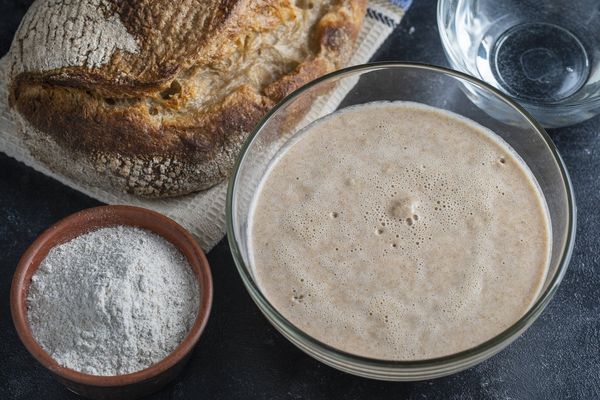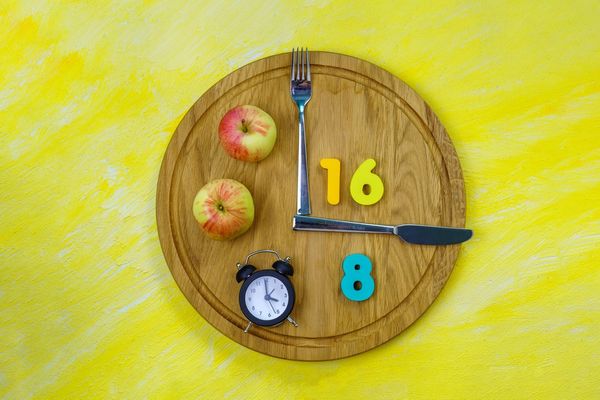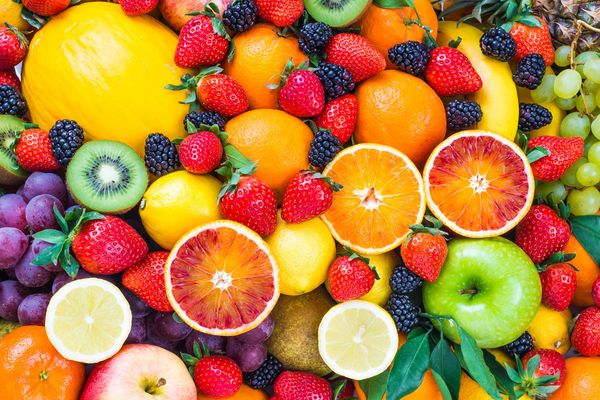Most of us know that eating more whole grains benefits our health. They can cut our risk of heart disease, lower high cholesterol levels, boost the immune system, reduce constipation and, according to recent research from the Harvard T.H. Chan School of Public Health, even lower our risk of dying.
What we don't always seem to know is how to get more whole grains in our diets. If you've already switched to 100 percent whole-grain bread, brown rice and whole-grain pasta, you're off to a good start.
But what if you want to do more?
There are so many whole grains to choose from, some with ancient pedigrees and others with modern-day trendiness. You can start your day with an old favorite like Red Fruit Trio Oatmeal or Breakfast Porridge made with bran and wheat germ. At lunch, branch out to California Fiesta Quinoa Salad. And for dinner try Bulgur Pilaf With Roasted Brussels Sprouts.
Most grains cook quickly and are packed with nutrients and fiber and versatile enough to mix with a variety of meats, seafood, fruits or vegetables.
Here are some brief grain descriptions from the Whole Grains Council, which also offers plenty of recipes:
Amaranth: This ancient grain from the Aztec culture is a "pseudo-grain," as is quinoa. It's not a true cereal grain, but its nutritional benefits are similar, and it can be cooked and used in much the same way. It has a lively, peppery taste and high protein content. Use it in cereals, breads, muffins and pancakes, but, because it has no gluten, you must mix it with flour for leavened breads. Try this Amaranth Banana Walnut Bread.
Barley: This ancient grain dates back to early Egyptian civilizations. It has a tough hull, which traditionally made it very slow-cooking, but newer hull-less varieties are sold in grocery stores for quicker cooking. Lightly pearled barley is technically not a whole grain because part of it is missing, but it's still loaded with fiber and plenty healthy. It's great in soups, pilafs, salads and baked goods. For the adventurous, try Barley Jambalaya.
Buckwheat makes delicious Buckwheat Banana Pancakes With Blueberry Sauce—but it's good for so much more, like soba noodles, kasha and pilaf. It isn't technically a grain, but its nutrients, as well as its nutty flavor and grain-like appearance, put it in the same nutritional basket with whole grains. It's known for its high levels of zinc, copper, manganese, potassium and an antioxidant called rutin—all of which can help you and your heart stay healthy!
Bulgur comes from wheat. It's what you get when you boil, dry, crack and sort wheat kernels. Because it's been precooked and dried, it can be prepared in about 10 minutes. It's sometimes called "Middle Eastern pasta" because of its versatility. Try it in side dishes, stews, pilafs or salads. It's best-known for its use in tabbouleh.
Einkorn is thought to be the most ancient wheat variety still around, but it's not found much in the United States. However, it is grown in Austria, Germany, southern France (known as "little spelt") and Italy (known as "little farro") and some eastern European countries. And it's starting to make a comeback here. That would be a good thing because it's higher in protein, phosphorous, potassium and beta-carotene than most grains.
Farro, also known as emmer, is an ancient strain of wheat, served as the daily ration to Roman soldiers. It was gradually abandoned in favor of the easier-to-hull durum wheat, but it's staging a comeback, particularly in Italy. Some Italians claim farro makes the best pasta. But be sure to avoid labels that say "pearled" and look for "whole-grain farro" or "whole farro."
Freekeh, also known as farik or frikeh, has a smoky flavor that comes from the way it's prepared. It's a hard wheat (often durum) that's harvested young and green, then roasted and rubbed. It's often sold cracked into smaller pieces for quicker cooking—about 20 to 25 minutes. Freekeh dates back to ancient Egypt and is now mostly used in Middle Eastern and Northern African cuisine. If you can find it, don't hesitate to try it in pilafs, stews or salads.
Khorasan wheat is more commonly known in this country by its brand name, Kamut. It's another heirloom grain that is regaining popularity as more farmers grow newer varieties of the ancient grain. It has a rich, buttery flavor and is higher in protein, amino acids and many vitamins and minerals than modern wheat.
Millet, also known as fonio, isn't really one grain; it's a group of several small, related ancient grains, including pearl millet, foxtail millet, proso millet, finger millet (ragi) and fonio. Millet is popular in India, China, South America and Russia and is beginning to catch on in the United States, both in its natural form and as flour. It is versatile enough to use in flatbreads, stews, side dishes and desserts—and can even be fermented to make alcoholic beverages. It's a great gluten-free alternatives, and its high level of proteins and antioxidants can help control blood sugar and cholesterol.
Quinoa is another "pseudo-grain," related to beets and Swiss chard but similar to grains in appearance, taste and nutritional benefits. It's small and light-colored, recognizable by its distinctive little "tail." It's available in several colors, including red, purple and black, and is very versatile in soups and salads or even Mushroom Quinoa Risotto. Be sure to rinse it before cooking to remove the bitter residue of saponins, which it uses to ward off insects.
Sorghum, also called milo, is one tough grain, thriving in areas like the Great Plains, where other crops can't survive. It can be eaten like popcorn, added to stews or salads, ground into flour or brewed into beer, but in the United States, it's mostly used as animal feed and in building and packing materials. That's too bad because it has a mild sweet flavor, is gluten-free and has a low glycemic index, meaning that it helps keep blood sugar levels stable and sticks with you longer than some other flours. If you find sorghum flour, try it in cookies, pies, pancakes, bread or even Chocolate Cake with Semi-Sweet Chocolate Icing.
Teff is a nutritious, easy-to-grow type of millet, but it's largely unknown. If you've eaten Ethiopian food, you've likely encountered it in the spongy injera flatbread that appears at most Ethiopian meals. Teff is gaining notice elsewhere because of its sweet flavor and versatility. Not only can you use it in bread and other baked goods, but you can add it to stews or make a version of polenta. It comes in red, brown and white varieties, and all are whole-grain because this tiny grain is too small to easily mill. Good things do come in small packages: it has twice as much iron as other grains and three times as much calcium.
Triticale is a newcomer to the world of grains, having been grown commercially only since the late 1900s. It's a hybrid of durum wheat and rye that grows well without commercial fertilizers or pesticides, making it popular for organic and sustainable farming. Because rye and triticale are high in dietary fiber, they're good for bowel health, blood sugar control and weight management. And, although both are often ground for flour, the berries are also tasty.
And while you're sampling these little-known grains, don't forget the more common ones like rye, corn (yes, popcorn!), oats, brown rice and wild rice, and good old unrefined whole wheat.
- What Is a Heart-Healthy Diet? ›
- 7 Foods That Help You De-Stress ›
- Eating to Beat Stress and Depression ›
- Do You Know Your Grains? ›







